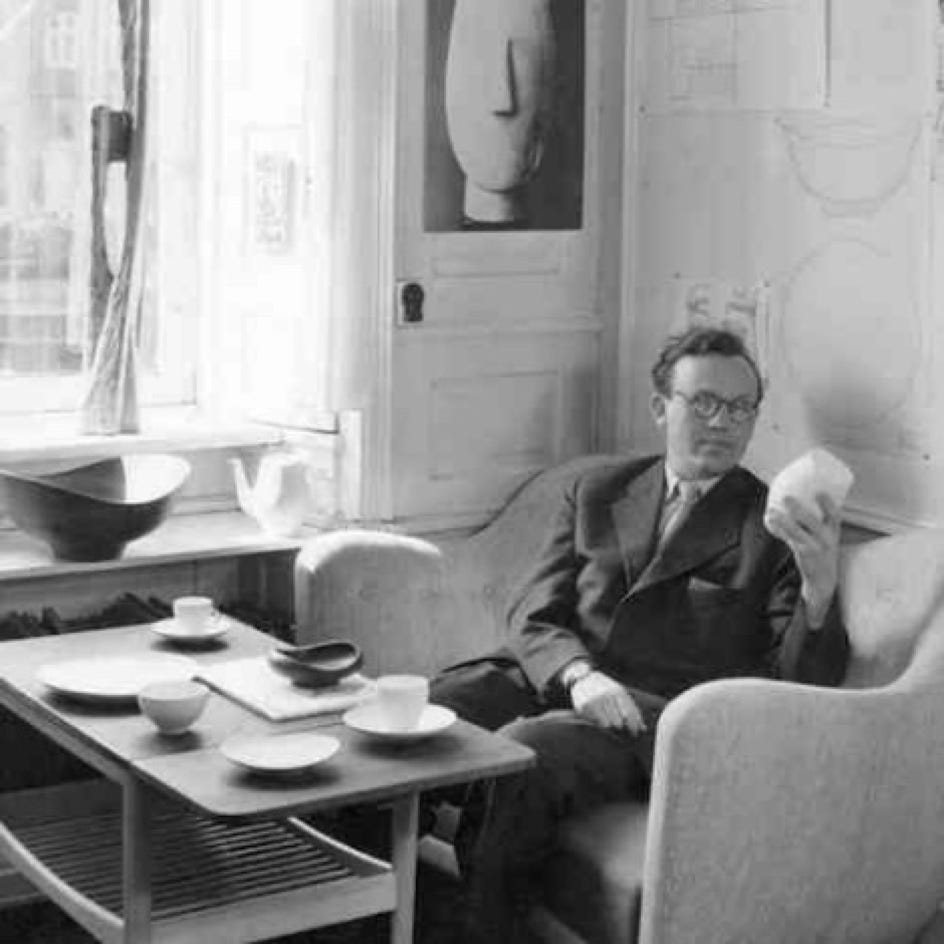15% off with DESIGN15

Finn Juhl designed the FJ sideboard with its coloured sliding doors and trays in 1955 for Bovirke. It is available in two color ways, yellow-red range and blue, and four types of wood. The frame is in hand-burnished steel.
It is part of a theme with cubist wood cabinets that float on delicate steel frames with wood “feet” and in particular the colours which Finn Juhl arranged throughout the 1950s and 60s. The colour elements reflected his fascination with Goethe’s famous colour circle, which placed the colours in a harmonious cohesion. Finn Juhl’s own house at Ordrupgaard in Copenhagen is a bright example of his use of colours.
Dimensions L180 x D45 x H90 cm
Structure walnut, oak, Oregon pine, teak
Legs painted steel in black, orange or light blue
Sliding doors matching wood veneer or painted yellow/white or blue/white
Drawers (optional) red/yellow or blue/white shades
Oak
Walnut
Oregon pine
Teak
wood doors, without drawers

FJ Sideboard without drawers – wood doors
from
walnut
oak
colored doors, without drawers
Color doors are available in white/yellow and white/blue.

FJ Sideboard without drawers – colored doors
from
wood doors, with drawers
The drawer units are available in warm (red/yellow) and cool (purple/blue) colors.

FJ Sideboard with drawers – wood doors
from
colored doors, with drawers
White/yellow doors match warm drawers.
White/blue doors match cold drawers.

FJ Sideboard with drawers – colored doors
from
Finn Juhl

As a teenager, Finn Juhl (1912-1989) wanted to become an art historian, having a passion for the fine arts since childhood. His father stopped him and Finn Juhl started architectural studies. Later, when his fame as a designer of furniture acquired, he speaks of himself as an autodidact, in reference to this upset vocation that forced him to walk intellectually on a lonely way. His style owes much to this singular trajectory, with its non academic interpretation of art visible in his work. Finn Juhl started his studies in 1930, a key period which saw the birth of modern design and furniture.
His modern offices in central Copenhagen was greeting his visitors with a huge Japanese fish in paper, symbol of imagination. Rather than thinking in terms of practical construction, Finn Juhl had the mind-set of a sculptor, when he shaped a piece of furniture. In the 1940s and 1950s, this way of working had never been seen before. His ambition was to design furniture with movement and life.
Juhl took pride in making both the structurally supportive elements of the furniture and the seated person look as though they are floating. In some of his chairs, the backrest and the seat are almost invisibly joined, as if they were clouds floating through the room.
In creating his furniture, Finn Juhl worked with two elements: The carrying element, and the carried. He eventually became known for his special ability to separate the bearing parts from the borne. This is one of many examples of how he broke free from conventional working methods and found his inspiration in art.